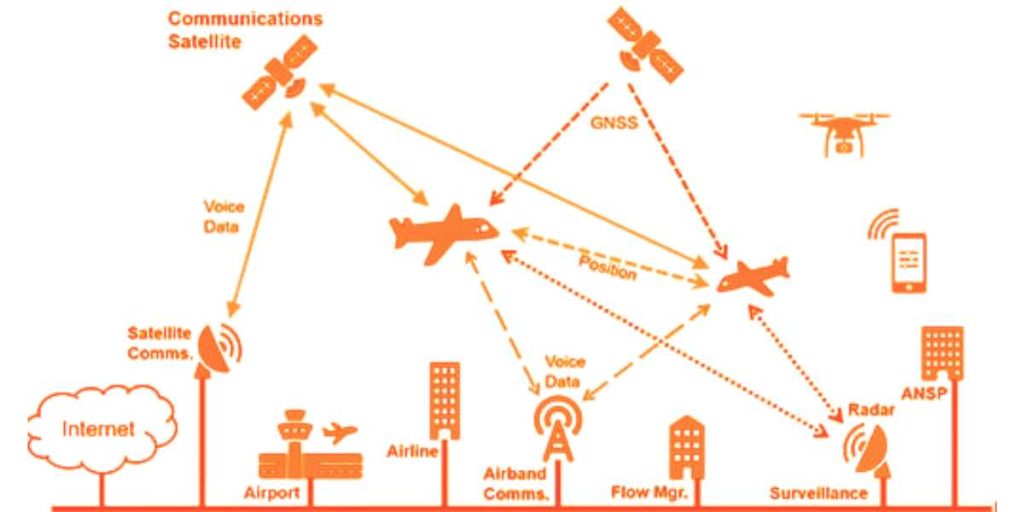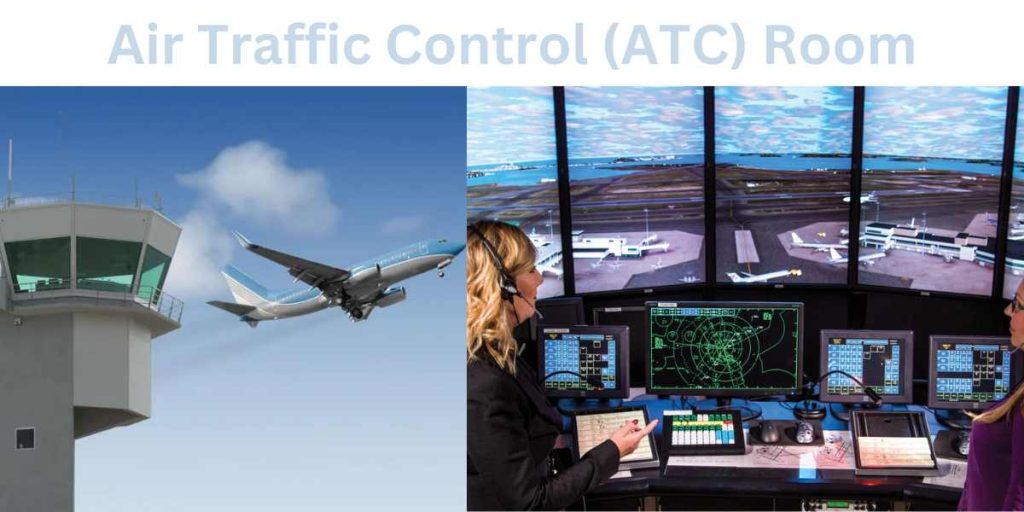Next-Generation Air Traffic Control Systems and Management (ATC)
Imagine millions of metallic birds dancing across a vast, invisible ballet stage – the sky. Each with a specific destination, carrying precious cargo or hundreds of eager travelers. Air travel, for all its seeming ease, is a carefully choreographed marvel, and the conductors behind the scenes are the wizards of the Air Traffic Control (ATC) System.
The ATC system is the intricate network that ensures the safe, orderly, and expeditious flow of air traffic. It’s a complex symphony of technology, human expertise, and constant vigilance, all working together to prevent mid-air collisions and keep the skies safe.

Unpacking the ATC Orchestra
Airport Manufacturers the ATC system relies on a powerful blend of technological marvels and highly trained professionals. Let’s delve deeper into the key players in this orchestra of the sky:
The Conductors: Air Traffic Controllers (ATCs): These highly skilled professionals are the human heart of the ATC system. Using a combination of radar control, flight data displayed on specialized air traffic control software, and clear communication with pilots, they maintain separation between aircraft, guide them through various flight phases, and provide crucial weather information. Imagine them as the conductors, using their experience and knowledge to orchestrate the safe movement of each aircraft.
The Eyes in the Sky: Airport Radar Systems: These sophisticated systems paint a real-time picture of the airspace. Terminal Radar Approach Control (TRACON) radars track aircraft near airports, while ground radars keep an eye on airplanes taxiing and maneuvering on the ground. Think of them as the watchful eyes, constantly monitoring the positions of each aircraft.
The Clear Communicators: Airport Communication Equipment: Ultra-high frequency (UHF) and very high frequency (VHF) radios are the lifelines of the ATC system. Through clear and concise communication, ATCs relay instructions, clearances, and advisories to pilots, ensuring everyone is on the same page. Just like musicians rely on a common tempo, clear communication is vital for maintaining order in the air.
The Navigational Guides: Airport Navigation Systems: These systems provide pilots with precise positional information and guidance throughout their flight. From the well-established Instrument Landing System (ILS) that helps with landings in low-visibility conditions to the revolutionary Global Navigation Satellite System (GNSS), these systems act as the sheet music, guiding each aircraft along its designated path

The Symphony of Air Traffic Management (ATM)
The overarching goal of the ATC system is air traffic management (ATM). This intricate dance involves several key aspects:
Airspace Management: Divided into sections with varying levels of control, airspace acts as the stage where the aerial ballet unfolds. ATCs manage different sections, ensuring smooth transitions between them.
Flight Planning: Just like a choreographer plans the movements of dancers, pilots meticulously plan their flight paths before takeoff. This plan, incorporating factors like weather and air traffic, is then coordinated with ATC for a seamless journey.
Radar Control: As mentioned earlier, radar systems provide a real-time picture of the airspace. ATCs use this information to maintain separation between aircraft and issue instructions to ensure safe passage.
Traffic Separation: This is the core principle of the ATC system. ATCs maintain a minimum distance between aircraft, both horizontally and vertically, to prevent collisions. Imagine it as the safety bubble around each aircraft, meticulously maintained by the controllers.
The Importance of Air Traffic Control Software
In today’s digital age, sophisticated software plays a crucial role in the ATC system. These programs integrate radar data, flight plans, and weather information, presenting a clear picture of the airspace to ATCs. They also provide functionalities like automated conflict detection and resolution, aiding controllers in their critical tasks.
A Harmonized Approach
While specific functionalities may differ slightly between countries, the core principles of ATC remain consistent worldwide. International organizations like the International Civil Aviation Organization (ICAO) work to establish global standards and ensure seamless air traffic flow across borders. This collaborative effort creates a unified system, allowing for the safe and efficient movement of aircraft across the globe.
The Future of the ATC Symphony
As air traffic continues to grow, innovation is constantly shaping the ATC system. Automation is playing an increasingly prominent role, with systems like Automatic Dependent Surveillance-Broadcast (ADS-B) providing real-time aircraft position data. Additionally, advancements in satellite-based navigation and airspace management techniques are optimizing traffic flow and reducing delays.
The future of ATC promises a more efficient, data-driven approach, further enhancing safety and ensuring the continued smooth flow of air traffic for years to come.
FAQs
What is the Air Traffic Control (ATC) System?
The ATC system is the network that ensures the safe, orderly, and efficient flow of air traffic. It combines technology, human expertise, and communication to keep planes separated and airspace organized.
Who are the Air Traffic Controllers (ATCs)?
ATCs are the highly skilled professionals who manage air traffic. They use radar, flight data, and clear communication to guide planes, maintain separation, and provide crucial information to pilots.
How does the ATC System prevent airplane crashes?
The ATC system relies on several measures to prevent collisions. Radar provides real-time aircraft positions, ATCs maintain separation between planes, and clear communication keeps everyone informed.
